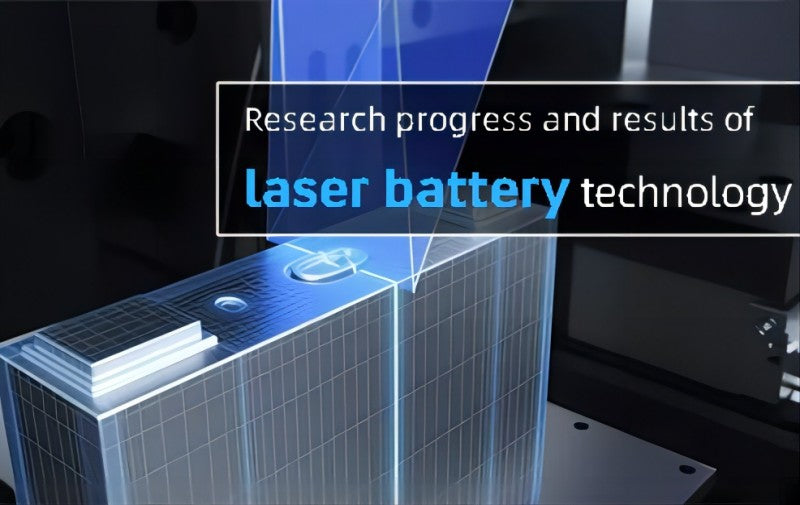
Main content:
- Basic characteristics of laser battery
- Research progress of laser battery technology
- Research progress of Si-based laser battery technology
- Research progress of GaAs-based laser battery technology
- Research progress of InGaAs-based laser battery technology
- Research progress of laser battery technology based on other materials
- Summary and prospect
Laser wireless charging technology is expected to become an important way for the next generation of smart electronic devices to obtain power. Laser battery, as the core component of laser wireless charging technology, needs to have the characteristics of good matching of laser wavelength response, high receiving laser power density, and high photoelectric conversion efficiency.
During the use of electronic product equipment, when it lacks power, the repeated connection and charging process affects the consumption experience of portable electronic products and reduces the continuous operation time and operation radius of the electric drive mobile platform.
Laser wireless charging technology, as a new charging technology, has the advantages of good beam directivity, high matching degree of charging target size, flexible and movable, and easy to realize high-power long-distance charging. Electricity, aerospace vehicle wireless energy transmission and other fields have great application prospects.
Basic characteristics of laser battery
The working principle of the laser battery is basically the same as that of the traditional solar photovoltaic cell, based on the photovoltaic effect of the pn junction. Although the working principle of the two is basically the same, there are still many differences between the laser battery design and the solar photovoltaic cell.
First of all, the laser battery receives monochromatic or quasi-monochromatic light irradiation. Selecting a semiconductor material with a suitable band gap (when the band gap is slightly smaller than the photon energy and has high quantum efficiency) can maximize the use of photon energy, so it can often Obtain a photoelectric conversion efficiency (PCE) much higher than that of solar photovoltaic cells.
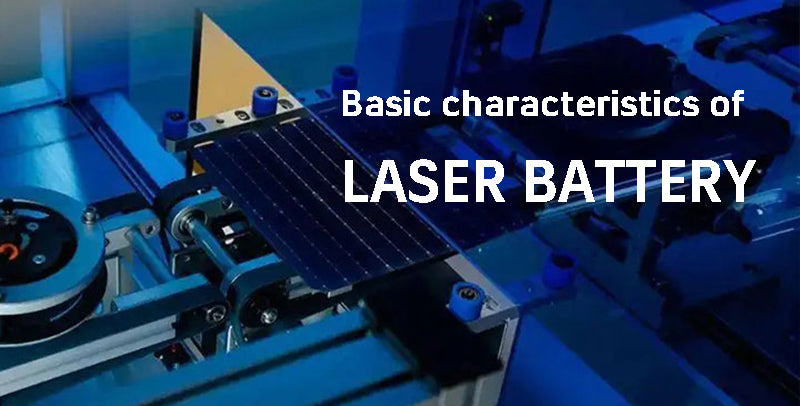
Secondly, the radiation intensity received by laser batterys is much greater than the intensity of sunlight, and the structural design of its devices is also significantly different from that of solar photovoltaic cells. Finally, the uniformity of laser irradiation received by laser batterys is relatively poor, and its module structure is much more difficult than traditional solar photovoltaic modules. The material system of laser batterys is similar to that of traditional solar photovoltaic cells, mainly including Si materials, GaAs materials, InGaAs materials, GaSb materials, etc.
Research progress of laser battery technology
Research progress of Si-based laser battery technology
Martin Green used a neodymium-doped yttrium aluminum garnet (Nd:YAG) laser as a light source to test the laser-to-electricity conversion characteristics of a single crystal silicon-based battery with an area of 4cm2. At a test temperature of 25°C, a wavelength of 1064nm, and an average Under 58.4mW/cm2 laser irradiation, the PCE of Si-based photovoltaic cells is close to 40%, while the efficiency value of the same device under AM1.5 solar irradiation conditions is only 23%.
Hiroaki Suzuki coated the surface of the monocrystalline silicon-based laser battery with an anti-reflection coating and introduced a back reflector structure on the back, and adopted a concentrated fine grid electrode structure to improve the laser absorption efficiency. Under laser irradiation with a wavelength of 1.07μm, as the average laser irradiation intensity increases from 0.1W/cm2 to 1.8W/cm2, the photoelectric conversion efficiency of a silicon-based laser battery with an area of 1.21cm2 increases from 19.3% to 24.2%.
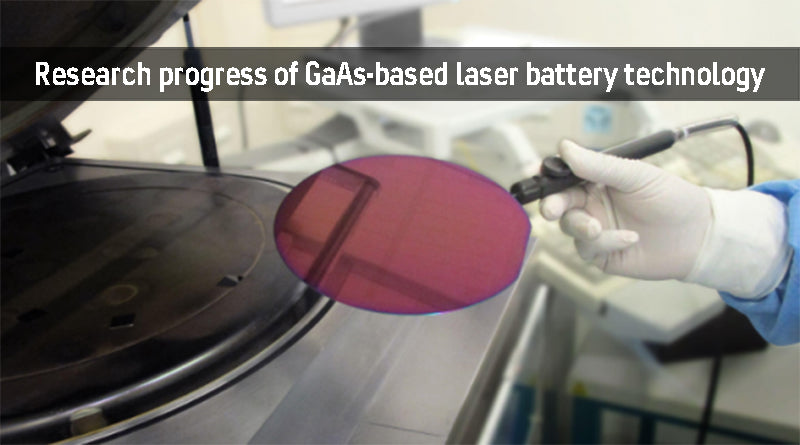
Research progress of GaAs-based laser battery technology
Viacheslav Andreev designed and prepared a GaAs-based laser battery with an area of 2mm2, and studied the photoelectric conversion characteristics of the laser battery under the condition of an average laser irradiation intensity of 5-200 W/cm2. Under the condition that the temperature of the control device is constant, the open circuit voltage increases continuously with the increase of the irradiation intensity.
When the irradiation intensity increases from 5W/cm2 to 200 W/cm2, the open circuit voltage of the device increases from 1.1 to 1.15 V to 1.2 to 1.26 V . Laser battery PCE up to 56%. As the laser wavelength increases from 600nm to 850nm, the efficiency of GaAs-based laser batterys is also increasing. When the laser wavelength is greater than 850nm, the device efficiency decreases rapidly.
The reason is that when the laser wavelength is greater than 850nm, the photon energy is not enough to drive Electrons in the GaAs material transition from the valence band to the conduction band. They prepared a high-output GaAs battery array composed of 8 sub-battery sectors in series, with a total area of 2.45 cm2, and achieved an output voltage of 8.8V at a wavelength of 820nm and an average irradiance intensity of 8.5W/cm2.
The maximum output power Nearly 10W. Henning Helmers designed and prepared a thin-film single-junction GaAs-based laser battery device, using MgF2 /Ag as the back reflector, which improved the absorption efficiency of the laser. Under this condition, the device efficiency is 67.3%, and the output voltage of more than 12V is realized by connecting laser batterys in series.
KHVOSTIKOV designed and prepared a GaAs laser battery with linear and nonlinear refractive index change AlGaAs waveguide structure. The prepared 2mm2 laser battery has an efficiency of 49%. When the refractive index of the surface waveguide changes linearly, exponentially, and logarithmically, the surface irradiation intensity of the laser battery is different.
Using a surface waveguide with a changing refractive index index can reduce the peak irradiation intensity at the p-n junction of the laser battery. For high-power lasers When irradiating, adopting this structure is expected to obtain higher efficiency. Ding Yanwen prepared four-junction and six-junction GaAs laser batterys with a size of 3mm×3mm.
The unpackaged laser batterys can output more than 1.7W of electric power under laser irradiation with a wavelength of 808nm and a radiation power of 4.78W. The six-junction GaAs-based laser battery is packaged using the Transistor Outline (TO) process. After TO packaging, the six-junction GaAs-based laser battery can output a maximum power of 1.08 W.
FAFARD conducted in-depth and systematic research and analysis on GaAs-based laser batterys, and designed and prepared a multi-junction GaAs-based laser battery device with a diameter of 2.1mm (area 3.46 mm2) and a junction number between 2 and 20 by using a vertical epitaxy heterostructure, through the absorption coefficient of the battery material and the current matching principle, the thickness of each layer is finely simulated and calculated.
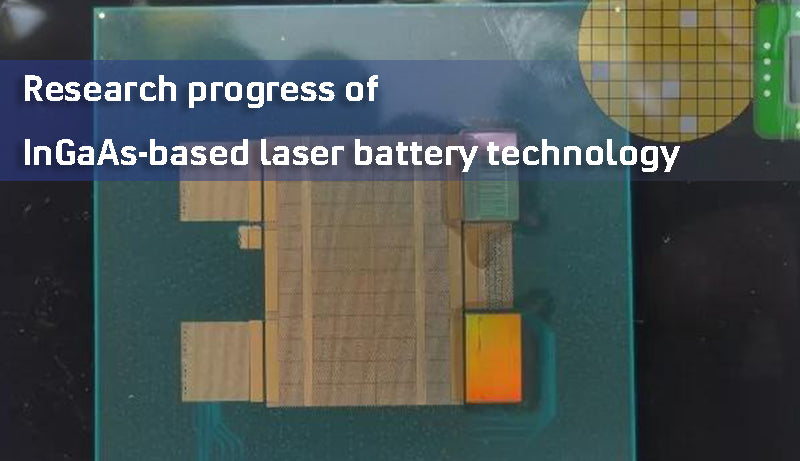
Research progress of InGaAs-based laser battery technology
Although GaAs-based laser batterys have achieved very high laser-to-electricity conversion efficiency, their cut-off absorption wavelength is at 870 nm, and they cannot convert laser energy with longer wavelengths into electrical energy. The ternary III-V semiconductor material InxGa1-xAs is used, can reduce the forbidden band width of the material (as the In content increases, the forbidden band width decreases), and realize the absorption of longer wavelength laser.
However, when the In content increases to a certain ratio, the lattice size of the InxGa1-xAs material and the commonly used substrate (GaAs) will have a lattice mismatch problem, which will affect the growth quality of the InxGa1-xAs absorber layer. Nikolay A. Kalyuzhnyy pre-grown a multi-layer heterojunction buffer layer (seven layers) before the epitaxial growth of the InGaAs absorber layer. By slowly increasing the In content (the In content of each layer increased by 3.5%), the substrate and the multi-layer and the lattice mismatch of the heterojunction buffer layer increases slowly.
Compared with the In0.27Ga0.73As-based laser battery, the In0.24Ga0.76As-based laser battery has a slightly lower spectral response under 1064 nm laser irradiation, but it can obtain a higher open-circuit voltage and finally a higher The laser-to-electricity conversion efficiency, under the laser irradiation with a wavelength of 1064nm and a radiation intensity of 4.5 W/cm 2 , the PCE is 41.4%.
They then optimized the device structure of In0.24Ga0.76As-based laser batterys, and studied the fixed concentration doping (1×1018 cm-3) and step concentration doping (5×1016 ~ 1.5×1018 cm-3) of the base region. 3) Influence on the performance of the laser battery device, the internal quantum efficiency of the device is effectively improved by adopting the method of step doping concentration.
In addition, the introduction of a graded buffer layer can reduce the dislocation density and increase the diffusion length of minority carriers. When irradiated by a uniform intensity laser with a wavelength of 1064 nm and an irradiation power of 0.25 to 1.00 W, the PCE of an In0.24Ga0.76As-based laser battery with an area of 0.078 4mm2 is 44.9%, while it is irradiated by a non-uniform intensity laser with the same wavelength at high irradiance power (0.3W).
The PCE decreased significantly, which was mainly due to the thermal effect of higher intensity light leading to a decrease in the open circuit voltage and fill factor of the device.
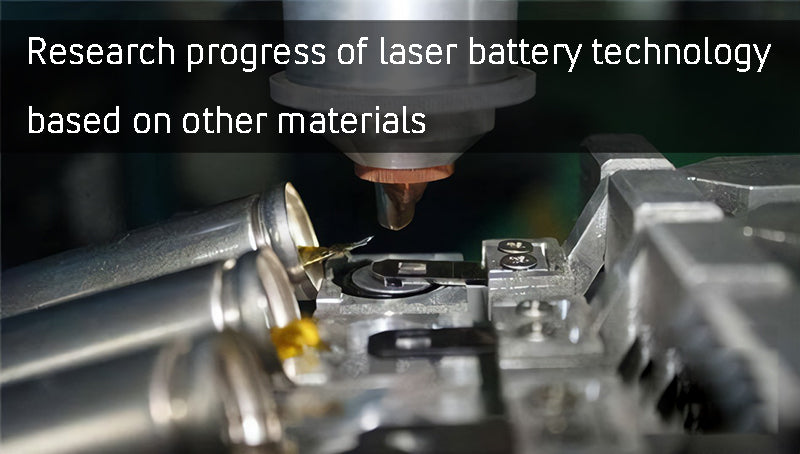
Research progress of laser battery technology based on other materials
In addition to the above-mentioned types of materials, several other types of materials are also emerging in the research of laser battery devices. Viacheslav Andreev designed and prepared a GaSb-based laser battery with a Bragg reflector structure, and the cell area is 2mm2. When the photogenerated current is 65A/cm2 under laser irradiation, the open circuit voltage of the laser battery is 0.57V, and the fill factor is 0.75.
Under the conditions of laser wavelengths of 1.68, 1.55, and 1.315 μm, the efficiencies of GaSb-based laser batterys are 49%, 45%, and 39%, respectively. For laser battery devices with specific structures, as the laser wavelength decreases, the energy of laser photons increases. The photon energy loss in the photoelectric conversion process is increasing, and the efficiency of laser batterys decreases with decreasing wavelength.
Mukherjee J prepared an InGaAsP-based laser battery with a size of 5 mm×5 mm on an InP substrate. Under the conditions of a laser wavelength of 1.55 μm and an average irradiation intensity of 1 kW/m2, the efficiency of the laser battery was 45.6%. After testing in the laboratory (temperature range of 16-26°C) and field experiments (temperature range of 14-40°C), the results show that the temperature coefficient of the developed InGaAsP-based laser battery is about -0.1 %/°C.
Under the irradiation of AM1.5 sunlight, the efficiency of InGaAsP-based laser batterys is only 13.3%. Yuki Komuro designed a GaInP-based laser battery with a size of 2.4mm×2.4mm. The laser absorption performance was improved by introducing a distributed Bragg reflector (DBR) structure, and the surface electrode spacing of the GaInP-based laser battery was reduced from 485 μm to 115 μm, reducing the lateral diffusion resistance.
The open-circuit voltage and fill factor of GaInP-based laser batterys are effectively improved by using these two methods. Under the conditions of laser wavelength 632 nm and average irradiation intensity of 1.1W/cm2, the efficiency of GaInP-based laser batterys reaches 46%. When the average laser irradiation power density is as high as 17W/cm2, the efficiency of GaInP-based laser batterys can still reach 43%.
Summary and prospect
From the perspective of the development of various laser battery technologies mentioned above, silicon-based laser batterys have relatively low laser-to-electricity conversion efficiency due to their low open circuit voltage and poor spectral response near the forbidden band width. GaAs-based laser batterys and InGaAs-based laser batterys can obtain high laser-to-electricity conversion efficiency under laser irradiation with wavelengths of 800-850nm and 1000-1 100nm, respectively.
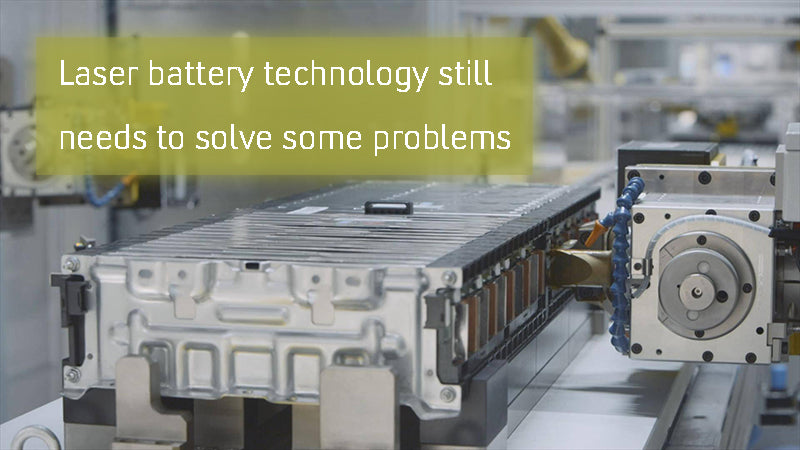
At present, the highest PCE of GaAs-based laser batterys is close to 70%. The PCE of InGaAs-based laser batterys also exceeds 50%. From the perspective of future applications, laser battery technology still needs to solve the following problems:
- The stability of the device under high-intensity laser irradiation
Although laser battery devices have higher photoelectric conversion efficiency, and high-intensity irradiation is beneficial to devices to obtain higher laser-electric conversion efficiency, in practical applications, laser irradiation is often carried out continuously, and heat accumulation will be greatly reduced.
- Preparation of high-performance large-area laser battery devices
Although the current maximum efficiency of laser battery devices is close to 70%, high laser-to-electricity conversion efficiency values are often obtained under small-area devices. The increase in device area not only requires higher-quality epitaxial growth, but also affects the device gate. Electrode current collection and thermal control put forward higher requirements.
Related article: carbon zinc battery vs alkaline, aa batteries, li-ion vs ni-mh battery
















